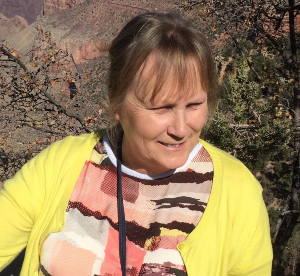The family safeguarding model, pioneered by Hertfordshire County Council from 2014, is one of the big success stories of social work in England in recent years.
The model involves teams of children’s social workers and specialist adults’ practitioners working in a structured way with parents, using techniques such as motivational interviewing to tackle the root causes of adult behaviours that increase concerns about children, particularly domestic abuse, substance misuse and mental health difficulties.
Not only has it been effective in reducing the number of children going into care and on child protection plans, but it was seen by parents as “participatory, supportive and empowering”, found a 2020 evaluation for the Department for Education of its implementation in Hertfordshire and four other authorities.
The model is now being used or implemented by 21 councils across the country, in many cases with the help of Hertfordshire’s Centre for Family Safeguarding Practice.
But more than eight years on, family safeguarding is continuing to flourish in the county of its birth, supporting parents to resolve issues in their lives and keeping children safely within their families.
Praise from care review and social work awards
Its success in Hertfordshire was hailed in the Independent Review of Children’s Social Care’s final report, published last year, and was one of the bases for its recommendation that multidisciplinary family help teams be established in each area to improve the quality of support for children and families.
It was also recognised at the 2022 Social Worker of the Year Awards, where Cheryl Grazette, service manager for family safeguarding, participation team & motivational interviewing practitioners, won the award for team leader of the year in children’s services. This included her ability to support students and her leadership of the service.
For staff including Kate Berry, who has just been promoted to team manager, senior practitioner Dennie Launay and Keisha Gilbert, consultant social worker, the model is inspiring them in their practice and a key reason why they love working in Hertfordshire . All three have worked in the service for many years and therefore can attest to how family safeguarding has shaped practice.
All three highlight the value of core elements of the model, particularly the opportunity to work with domestic abuse, mental health and substance misuse practitioners, as well as child and adult psychologists, which is underpinned by group supervision.
Value of multidisciplinary approach
When we speak to Dennie, she is about to attend a child protection conference, where her recommendation is to step down to child in need.
Nine months earlier, when the family was allocated to her, the intention was to initiate care proceedings for the child because of extensive and longstanding domestic abuse, perpetrated by the father. He was then recalled to prison, which gave Dennie and the team’s domestic abuse worker the opportunity to work with the mother.

Dennie Launay, Hertfordshire County Council
“Mum, for a long period of time, didn’t feel like there was an impact on the child,” says Dennie. “So, I worked with the domestic abuse worker to focus on the impact on the child. She helped me to create tools, which I used to work directly with the child to look at her experiences, whilst the domestic abuse worker worked with the mother.”
“We’ve reduced the concerns,” says Dennie. “[The father] no longer attends mother’s home, however mother has ensured safe contact, using extended family to support. That’s a massive shift from the start when she was very reluctant to work with us”
She says her work with the family exemplifies the strengths of the family safeguarding model.
“As social workers we have our own skillset in terms of the direct work that we do,” she says. “But having the expertise of others and being able to pull across their knowledge and tools that they use in their programmes enables a whole family approach, that we didn’t really get before family safeguarding.”
Within supervision, the domestic abuse worker “would provide an update on her work and where she felt mother was at on the cycle of change”, she says.
“It enabled us to create an action plan around ongoing support,” Dennie adds. “It was really important to have not just my view but another worker’s view in those case discussions.”
From section 20 care to successful reunification
Keisha recalls working with a primary school-aged child of a single father, about whom there were concerns about his mental health and alcohol use.
The young girl had been made subject to a child protection plan and Keisha referred the father to the team’s mental health and drug and alcohol workers.

Keisha Gilbert, Hertfordshire County Council
“I felt I built a really good relationship with the child, enabling her to report her concerns and provide us with information about her lived experience,” she says. “Unfortunately, due to ongoing concerns, she had a period of being in care under section 20 [of the Children Act 1989].
“But instead of going to court we continued working with her father. He engaged really well with the drug and alcohol and mental health workers. He attended a DBT [dialectical behavioural therapy – a form of talking therapy] course and had counselling, all provided from within the family safeguarding service.”
The team started contact between father and daughter and she was able to transition back to living with him. Over time, he stopped seeing the mental health and drug and alcohol workers and the family and status of the plan changed to child in need. The family are no longer open to children’s services.
For Keisha, the key to success was working hand in glove with the mental health and drug and alcohol workers, which helped the father overcome longstanding distrust of children’s services, the result of bad experiences in other areas. The father, Mr M, was happy to share his view (below).
“I have been involved with social services for over a decade in other areas. I moved too Hertfordshire with my daughter. I lost everything and was struggling with drugs and alcohol.
“It got so bad that my social worker Keisha and her student Ruby spoke to me about section 20 foster care for my daughter. I had to make the hardest decision of my life. Looking back that needed to happen for me to realise that I had to change my life which I did. Keisha showed me some tough love and I started to trust social services for the first time. My daughter returned to me after months of hard work and I’ve never been happier. Social services saved my life, basically!”
Reducing waits for services
Another benefit of multidisciplinary teams is that social workers do not have to refer families to external specialist agencies, which was significant for a mother Kate has been working with.
Kate’s focus was on supporting the woman to reduce her cannabis use. Initially, she refused drug and alcohol services, but through Kate’s work with her she eventually agreed.

Kate Berry, Hertfordshire County Council
“Previously I would have made the referral and had to wait and wait,” she says. “Now, I’m able to make the referral, have a conversation with the drug and alcohol worker and do a joint visit. Being able to do that really helped mum as I was able to support her in meeting someone new. It was much more comfortable, much more relaxed.”
Besides multidisciplinary working, Dennie, Kate and Keisha also particularly highlight the value of the family safeguarding workbook, which provides a structure for working with families through a series of modules. These cover areas such as family history, parents’ understanding of the impact of their behaviour and the voice of the child.
A structured approach
Kate says the modular approach was particularly important for a family from Slovakia she worked with. The concerns were around sexual exploitation and neglect.
“This family had been open previously to children’s services and, maybe because there was a lack of structure, social workers were telling them what the problem was, without really having an understanding of their culture and any difficulties they may have had understanding what was required” she says.
“The modules help you slow down because you’re not jumping here, there and everywhere. You can go in and explain what the children’s needs are, how to meet them and what would happen if those needs weren’t met – that’s what they didn’t understand.
“We stepped them down from public law outline to child protection to child in need and I’ve very recently ended our involvement because there are no longer any safeguarding issues for the children. Without the focus that the workbook and the modules bring, we may not have got there as quickly, if at all.”
Embedding long-term change
For service manager Cheryl, who was a manager of a family safeguarding team at its birth in 2014, another key strength of the model is its ability to support long-term change in families.
“Every family is going to hit crisis at some point so we help them build up their own mechanisms to deal with crisis,” she says. “So we do our family group conferences earlier, looking at support networks. When we are no longer involved, we have left them with a contingency that reduces the need for a future referral.
“The family safeguarding programme encourages social workers to recognise that they are agents of change; the aim is to support families to first acknowledge difficulties and behaviours and then work alongside them, with our adult workers supporting change. This approach works much better in the long-term, supporting families to maintain changes and not just supporting change at a surface level as change is less meaningful.”
At the same time, the council is promoting the model nationally, through its Centre for Family Safeguarding Practice.
On collecting her award at the Social Worker of the Year Awards, Cheryl says: “When staff from local authorities heard I was from Hertfordshire, they said, ‘you’re the authority that started family safeguarding’. It’s amazing how many asked about it.”
Are you interested in working in family safeguarding or in other roles in Hertfordshire? Check out the latest vacancies here.
You can also find out more about the family safeguarding model below:




 Facebook
Facebook X
X LinkedIn
LinkedIn Instagram
Instagram